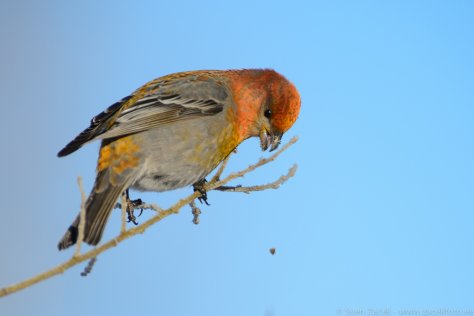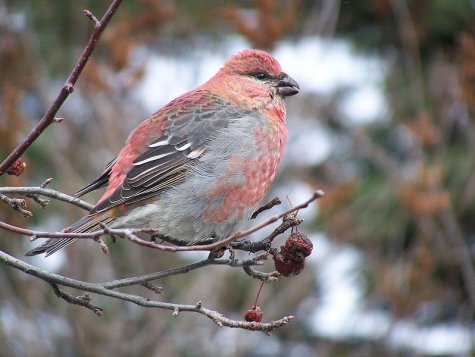Colourful and rare winter guests
Photo: Sven Zacek, www.zacekfoto.ee
Translation: Liis
Pine grosbeak
Pine grosbeak Männileevike Pinicola enucleator
The latest major invasion of pine grosbeaks was in the winter of 2012-13 and they are not at all seen every winter. What makes the pine grosbeaks leave their breeding territories – the conifer forests of the North? The reasons are quite a few: a very successful nesting year with many juveniles but also shortage of food in the home forests.
The bold and colourful pine grosbeaks are easy to observe since most of them have not encountered humans in their home forests, but for meeting them one rather needs a bit of luck, they will not be unnoticed with their exterior. Where and on what the arrivals from the North feed here – there are still many rowans on the trees, but for the seed-eaters only the seeds will do, not the flesh of the fruits which is dropped out from the beak; in addition we can meet them on junipers and Swedish whitebeam, and also on larches that is a tree of the pine grosbeaks’ home forests.
Pine grosbeaks are roughly the size of a thrush, with a long tail, a slightly clumsy style and a really short neck. The brown beak is just what is useful for pecking at cones, eye colour brown and legs of the same colour. Length some 20 centimetres and weight around 50 grams.
The plumage of the males is mostly crimson, that of the females orange-yellow, the plumage of juveniles has less bright colouring but with colours as the female bird. The wing plumage of all is black, white wing bars and primaries (male has pinkish instead of white) are visible. Colouring similar to crossbills..
Pine grosbeak observations: LINK
Photo: Wikimediast
Male bird










